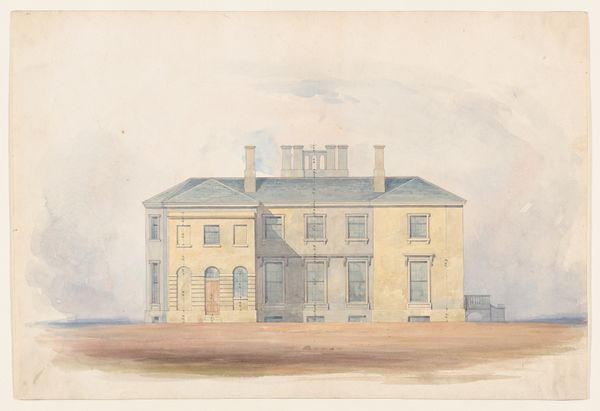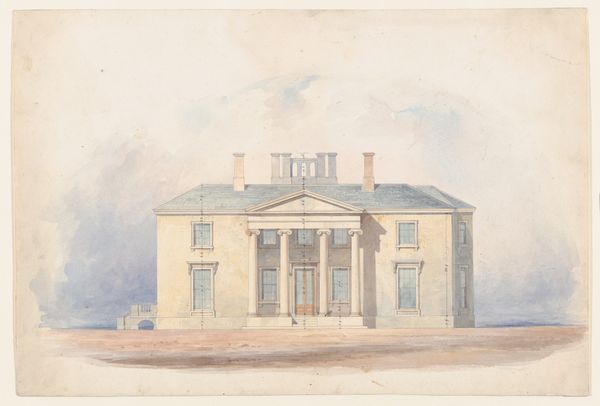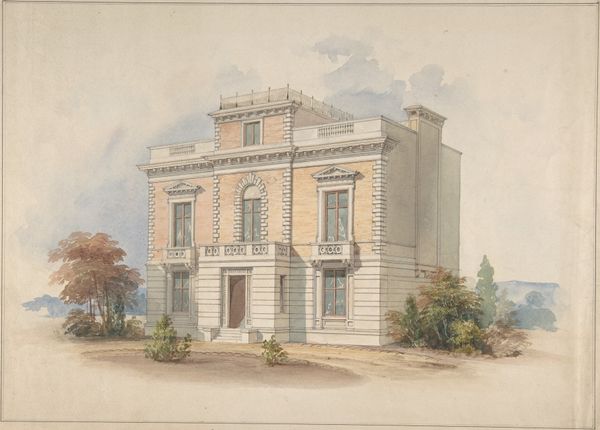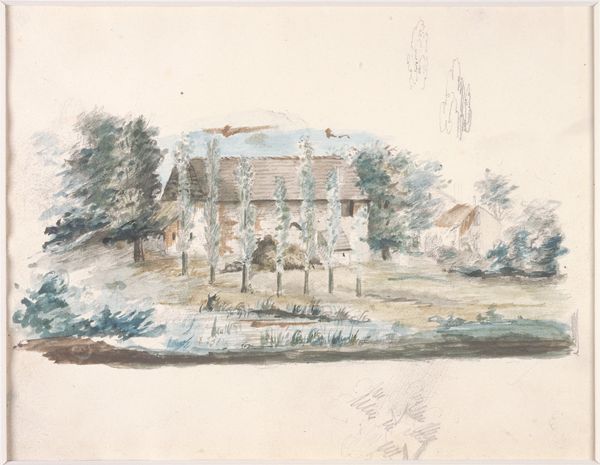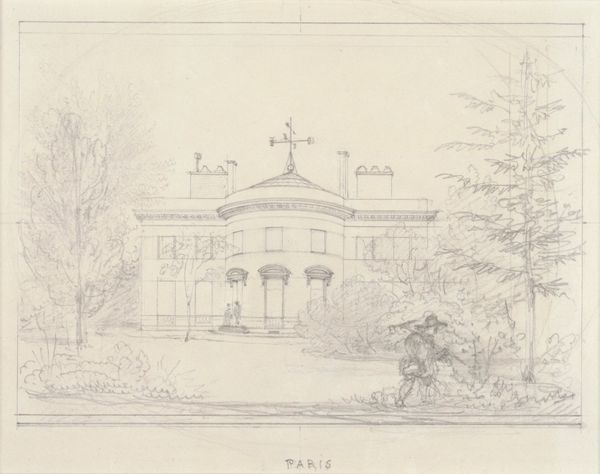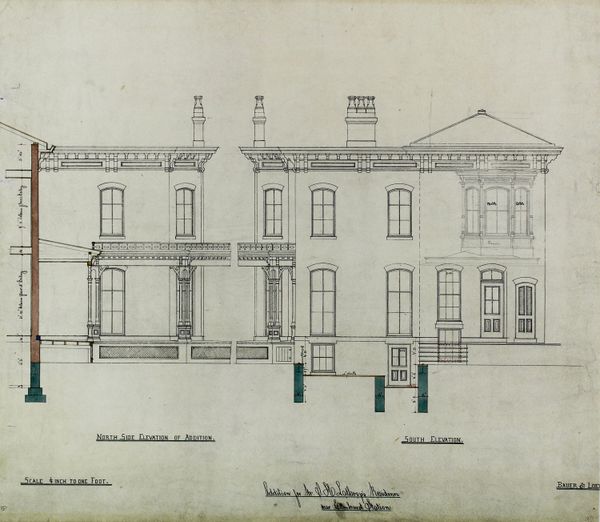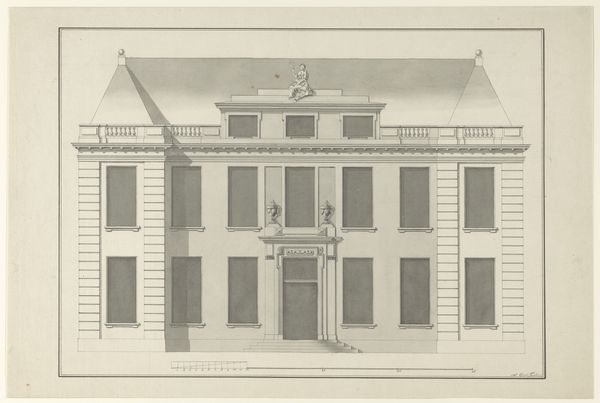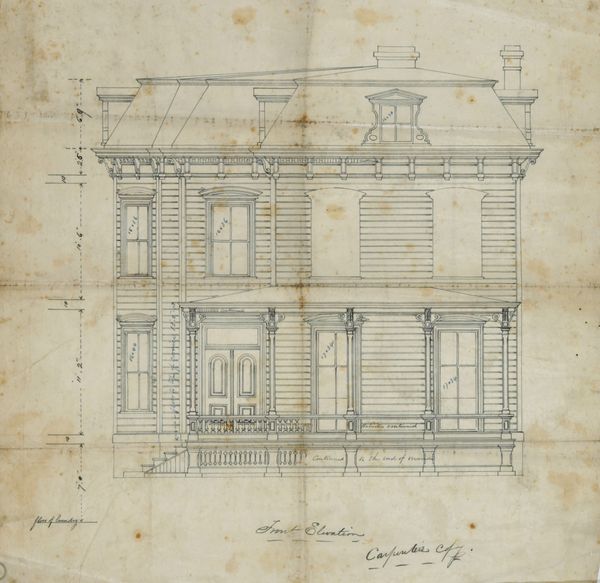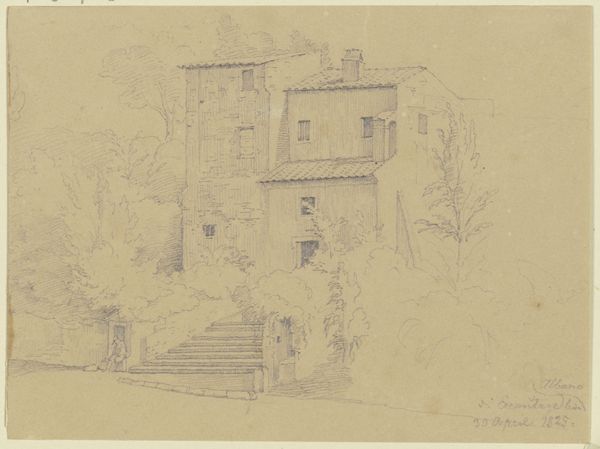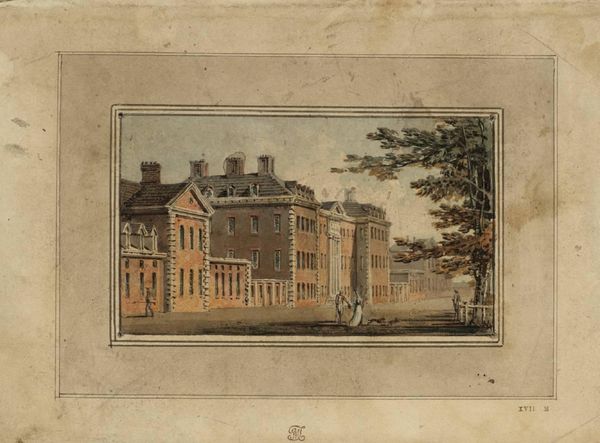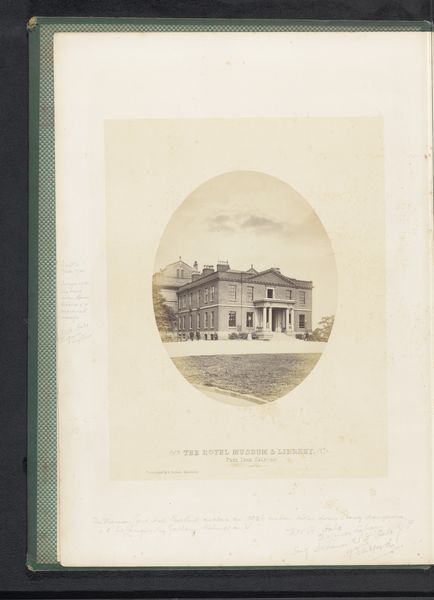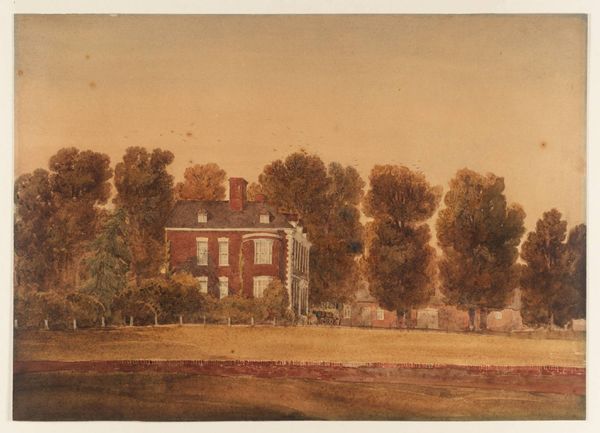
Design for a Classical Country House, Side Elevation 1800 - 1830
0:00
0:00
drawing, painting, print, watercolor, architecture
#
drawing
#
neoclacissism
#
painting
# print
#
landscape
#
watercolor
#
coloured pencil
#
cityscape
#
architecture
Dimensions: Sheet: 10 13/16 × 15 15/16 in. (27.5 × 40.5 cm)
Copyright: Public Domain
Editor: This drawing, “Design for a Classical Country House, Side Elevation,” made between 1800 and 1830 by an anonymous artist, utilizes watercolor, pen, and colored pencil. The understated color palette gives the architectural rendering a serene, almost dreamlike quality. What does this piece say about the culture it comes from? Curator: It speaks volumes, actually. Look at the symmetry, the clean lines, the imposing yet restrained classical elements. This is Neoclassicism in its architectural aspirations. It suggests a desire to associate with the perceived order and rationality of the Roman Republic. Do you notice how it elevates a private residence to something resembling a public monument? Editor: Yes, I see it. So, it's not just a house, it's making a statement about… power, maybe? And permanence? Curator: Precisely. Consider who would commission such a design. The wealthy, of course, but also those invested in maintaining a certain social order. This isn't just about shelter; it's about projecting an image of stability and authority, connecting themselves to historical ideas about civic virtue and control during times of rapid change during the industrial revolution. Why depict just the side, do you think? Editor: Maybe the side view emphasizes its connection to the landscape, like it's meant to blend in and dominate at the same time. Curator: Interesting thought. Remember that the control of land equaled political power. Visualizing this controlled perspective could imply ownership over all of that space. So the aesthetic is intrinsically bound up with sociopolitical concepts. Editor: It's fascinating to think about how buildings, even on paper, can be such loaded symbols. Curator: Indeed. By studying such designs, we can decode the values and ambitions of a bygone era and consider echoes in our present-day architecture. Editor: This perspective really helps to appreciate art, thinking of it more critically.
Comments
No comments
Be the first to comment and join the conversation on the ultimate creative platform.
